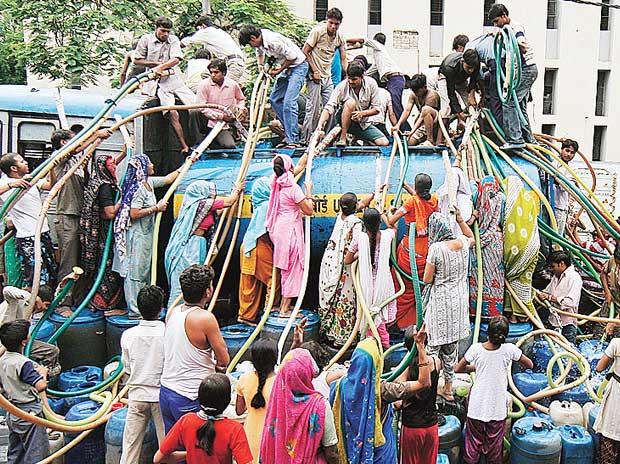When Abysmal Civic Amenities Are Accepted As Normal

Mahesh Vijapurkar
Since February, when Latur went dry, Indian Railways ran over 100 water trains from Miraj. And then,
suddenly, there was good news: it rained, and the two sources which feed Latur were filled, and everyone
rejoiced. The municipal officials exulted that the crisis was ‘almost over’. Almost because 2-3 days were
required to restart the pumping stations shut for months.
Scarcity had disturbed the socio-economic life of the city and return to “normal” life was eagerly looked
forward to. People had to spend hours of their days to get their share of the elixir of life, upsetting the routine
and rhythm of running a home, going to work, or even school.
There is, however, another frightening angle to this ‘good news’ from Latur. Indian Express had reported,
“Civic officials said every locality would started getting water once in 15 days. This has been the practice all
along and Latur residents are used to it. We supply more than two hours of water, which is sufficient to last
for next 15 days as people store water in smaller tanks, utensils and other storage facilities.”
Once in a fortnight? And that is normal? As people are used to it, and have organised themselves to cope
with the shortage, which is normal? Imagine the space in households lost, of having to manage the water for
drinking, and then washing and toilet flushing. It is a surprise that Latur has not sunk out of sight in
unhygienic conditions. Not that any city or town is hygienic.
This reflects two things. One, the urban management has wretched standards. Since India is urbanising,
increasing populations without commensurate additions to services lower it further. Two, people, expect
nothing better, and do little to pressure the authorities to improve matters. A combination of official and
planners’ apathy as well as the citizen’s helpless which is shown off as resilience is all we get.
Irony is that we see Indian towns and cities only as work in progress, not because the essentials have been
done, but because no urban space does have them done: Delhi has its bastis, Mumbai its slums, and even
smaller towns their own share of filth, unless they are run by corporates, like Tata Salt’s Mithapur, or Tata Steels’ Jamshedpur, or Singareni Collieries’ Kothagudem’s parts under its control.
Outside, it is the familiar chaos – extremely bad roads, poor water supply, both in quantity and quality,
nominal street lighting, drains and open manholes. What all one expects in a city is not what is found in a city.
Or a town, even a small town. You take your pick and except for a very few, if any, hardly a properly provided
and run city would be found.
Villages grow into towns and then cities, upgrade from municipal councils to corporations, and yet do not
even have underground sewage lines. If they do, they hardly have thought of proper solid waste
management. Within these urban spaces are the underbellies, llike Delhi’s bastis and Mumbai’s slums which
are ignored.
Ironically, there is pride in mentioning how old our civilisation is. We mention how advanced Indus Valley
Civilisation’s city-based was. We forget that then had both running water and an underground system of
drains, soak-pits, and jars for cesspool management. And now, urban India could well be a large cesspool.
Why do urban dwellers accept these low standards and allow the issues to fester and worsen over the years?
Of course, water is a resource to be found, husbanded, and harnessed appropriately for efficient use, though
it is renewable. But once in a regular while, it can become scarce, or be disastrously abundant in its
availability.
But drains and sanitation are not depended on nature. The list of shortcomings can easily lengthen to include
just about everything that a city requires but does not get enough of: transport, roads, sidewalks, markets.
The talk of ‘smart cities’ is ridiculous in that thees basics have been ignored. What we have is not even a
common sense approach to planning and managing urban habitats, but with feet of clay, believe our heads
can be among the stars.
No wonder, two hours of water supply once a fortnight is ‘normal’.




